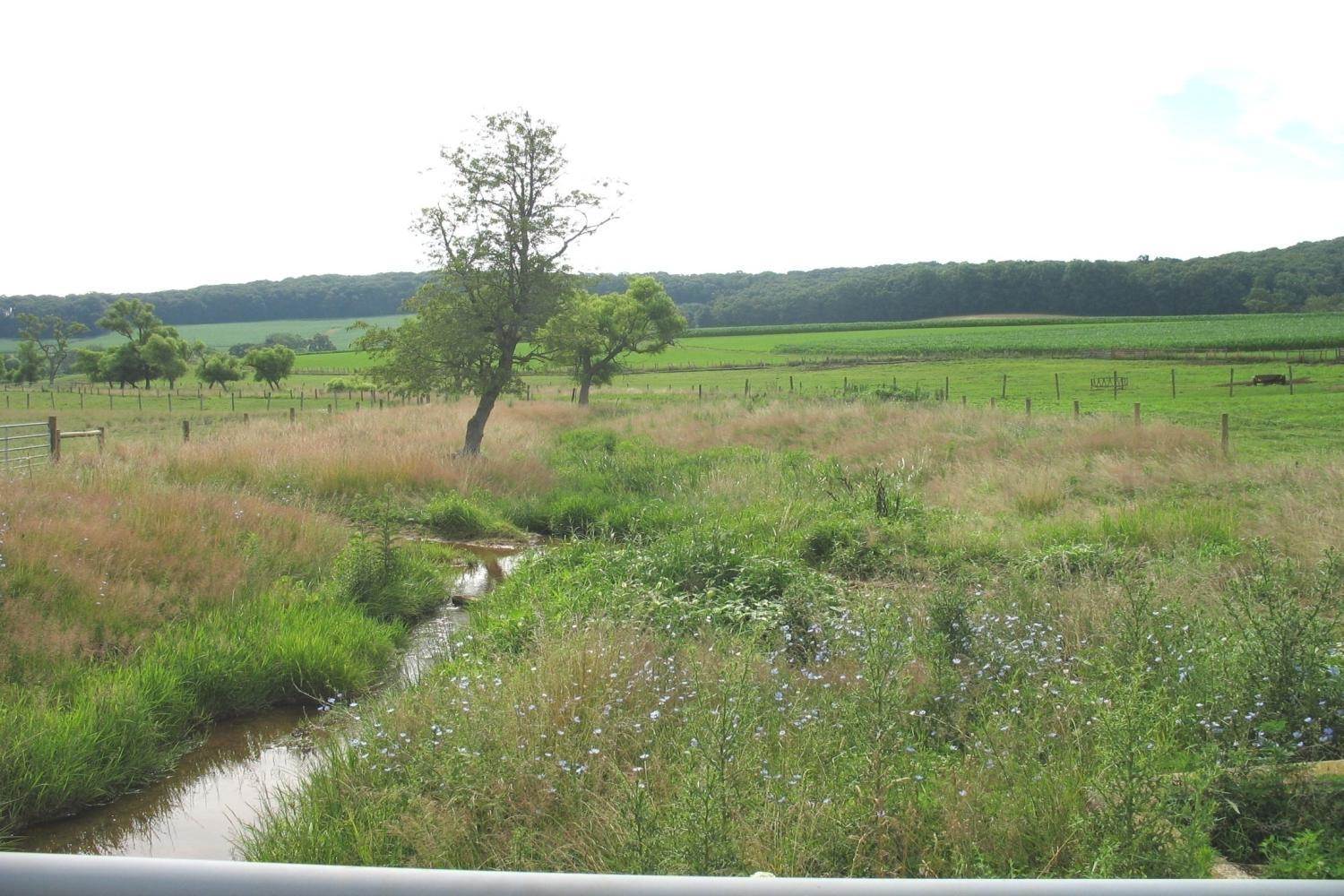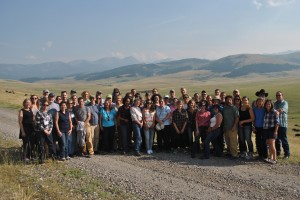As 2014 comes to a close, we thought we would take a moment to recognize and celebrate this year’s victories for sustainable food and farming. Among the successes? From new or restored farm bill programs that are up and running, important progress on our campaign priorities, hill visits and hearings, and the release of our Grassroots Guide to Federal Food and Farm Programs, we think there is a lot to be grateful for as we head into 2015! Below is our list of the “Top 14” highlights of 2014:
1. Farm Bill Passage and funding restored
After a lengthy, two-and-a-half year process, Congress finally passed a farm bill in early February to restore funding to key agricultural programs. Although the 2014 Farm Bill fails to address important issues like subsidy reform, it invests over $1.2 billion in programs supporting local food, beginning farmers, organic agriculture, and specialty crops that were unfunded in 2013. Read NSAC’s comment on the final farm bill and our analysis to find out What is in the 2014 Farm Bill for Sustainable Farms and Food Systems.
2. Seeds and Breeds Summit draws attention to dwindling public seed supply
The troubling decline in the nation’s public seed supply poses a major threat to sustainable and organic farmers. In March, over 35 breeders, researchers, non-profits, and academics gathered in the nation’s capital to discuss the state of the seed supply and the make recommendations to reinvigorate public research and seed availability. The proceedings from the summit gathered national press attention when they were released by the Rural Advancement Foundation International, an NSAC member organization based in Pittsboro, NC.
3. Changes to Farm Storage Facility Loans Program Benefit Diversified Operations
USDA took a major step toward recognizing the risk management benefits of diversified operations by announcing changes to the Farm Storage Facility Loan program in March. The changes waive the acreage reporting and crop insurance requirements for highly-diversified farms, and improve access to low-interest loans for beginning farmers and diversified operations.

4. Farmers Travel to DC to Speak Out on 2015 Agricultural Budget
Two fly-ins, one in March and one in June, brought farmers, farmer advocates, and business leaders from around the country to Washington D.C. to share their stories with the members of Congress deciding on 2015’s agricultural budget, and to discuss the importance of critical USDA programs that support research, conservation, rural development, marketing and beginning farmer priorities.
5. CRP-TIP Funding Restored to Conserve Sensitive Land and Support Beginning Farmers
USDA announced funding for the CRP Transition Incentives (CRP-TIP) program, which provides financial incentives to retiring farmers, ranchers, and landowners enrolled in the Conservation Reserve Program (CRP) if they opt to transfer a portion of their land to beginning, socially disadvantaged, or veteran farmers who will use conservation practices on the land.
6. California FarmLink Staffer Brett Melone Testifies at House Ag Hearing on Rural America in Support of IDAs
At a hearing on credit availability in rural America, Melone’s testimony was the only one to focus on credit for beginning and minority farmers. Melone stressed the importance of funding the Beginning Farmers Individual Development Account pilot program, which helps to build equity for new limited resource farmers.

7. Conservation Stewardship Program Exceeds 60 Million Acres and Begins First Ever Re-Enrollment Period
With over 60 million acres of crop, forest, pasture, and rangeland currently enrolled in the Conservation Stewardship Program (CSP), it’s the the largest federal conservation program by acreage. This year was the first time that already-participating farmers and ranchers could apply to re-enroll in the program, meaning that 20,000 farmers and ranchers, with over 20 million acres in land, could re-enroll to manage and expand upon critical environmental benefits.
8. USDA Rolls Out Conservation Compliance and Prairie Conservation Protections
The USDA rolled out two changes to the 2014 Farm Bill crop insurance program that incentivize better conservation. First, in June the USDA announced crop insurance changes that include the implementation of the the 2014 Farm Bill’s Sodsaver provision to discourage farmers from converting native prairie into cropland. Second, in October the USDA announced that it will now allow farmers who receive crop insurance premium subsidies to certify that they are in compliance with highly erodible land (HEL) and wetland conservation requirements, collectively known as “conservation compliance.” Crop insurance subsidies had been unlinked from conservation compliance between 1996 and 2014.

9. NSAC Members and Staff Gather for Summer Meeting in Montana
NSAC staff and representatives of NSAC member organizations convened to begin NSAC’s strategic planning process, review coalition priorities, plan for next steps, and reconnect and engage with fellow members in beautiful Montana!
10. Member Organizations Collect Grants for Farmers Market and Local Food Promotion
Congress’ inability to pass a farm bill stranded the Farmers Market Promotion Program in 2013, dealing a major blow to farmers markets nationwide. But the program expanded and came back strong in 2014, with over 370 organizations receiving over $27 million in grants to support farmers markets and local foods. NSAC was well-represented among the recipients, with 21 member organizations receiving a grant from the USDA’s Agricultural Marketing Service.

11. FDA Heard Us! Agency Releases Revised Draft Food Safety for a Second Public Comment Period
Due to major problems in the original proposed food safety rules, the Food and Drug Administration (FDA) went back to the drawing board with a revised approach on several key issues. The second draft they released this fall contained many positive changes to address the impact the rules will have on sustainable food and farms. But they didn’t fix everything. We launched a second FSMA comment campaign to make sure they got it right the second time around! Check out our “Top Ten Fixes and Fails” blog post to learn more about the second draft.
12. USDA Rolls Out Whole Farm Revenue Protection
In November, USDA’s Risk Management Agency (RMA) rolled out its new Whole Farm Revenue Protection (WFRP) insurance policy, allowing diversified operations to cover all crops or livestock on their farm with one policy. WFRP replaces the under-utilized Adjusted Gross Revenue (AGR) and AGR-Lite policies, providing higher coverage levels, higher subsidies, premium discounts for increased farm diversity, and other improvements.
13. NSAC publishes the 2014 Grassroots Guide
In November, NSAC unveiled the 2014 Grassroots Guide to Federal Farm and Food Programs, the product of months of writing and analysis. This comprehensive digital resource provides up-to-date descriptions as well as information on funding, eligibility for federal programs supporting conservation, beginning farmers, research, food safety, local food systems, and more.
14. RMA Makes Progress on Organic Price Elections
Heading into 2015, more than 20 individual crop insurance policies now have organic price elections–up from just four in 2011. The Risk Management agency issues individual organic price elections so that a farmer can insure their organic crop at the organic price, which is often much higher than the conventional price. More work needs to be done to develop organic price elections for the remainder of the more than 100 individual crop policies offered by the RMA, but 2014 showed significant progress.

